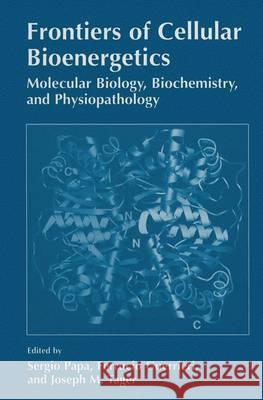Frontiers of Cellular Bioenergetics: Molecular Biology, Biochemistry, and Physiopathology » książka
Frontiers of Cellular Bioenergetics: Molecular Biology, Biochemistry, and Physiopathology
ISBN-13: 9781461371960 / Angielski / Miękka / 2012 / 801 str.
Frontiers of Cellular Bioenergetics: Molecular Biology, Biochemistry, and Physiopathology
ISBN-13: 9781461371960 / Angielski / Miękka / 2012 / 801 str.
(netto: 191,66 VAT: 5%)
Najniższa cena z 30 dni: 192,74
ok. 22 dni roboczych
Dostawa w 2026 r.
Darmowa dostawa!
One of the most obvious and fundamental properties of living things is their ability to utilize the potential energy in their environment for their own ends. It is not surprising therefore that the mechanism of this biotransformation of energy-bioenergetics-has long exercised the minds of the leading scientists of their day-from Lavoisier's recognition that respiration is fundamentally the same as combustion, Priestley's discovery of photosynthesis, and Spallan zani's thesis that respiration is an intracellular process. Until about 30 years ago, the field of bioenergetics was the center of biochemistry, attracting many of the great biochemists of the century, such as Warburg, Keilin, Meyerhof, Engelhardt, Krebs, Lipmann, and Calvin. After the main pathways of intermediary metabolism and electron transfer were estab lished, however, further progress in elucidating the mechanistic details was slow. This slowdown was due to the absence of sufficient knowledge of the structure of the catalysts involved, even after the innovative proposal by Mitchell on the fundamental role of the translocation of protons across mem branes, which revolutionized the way in which the mechanism of energy transduction was envisaged and for which he was awarded the Nobel Prize for chemistry in 1978. Competition from other fields of biochemistry in which progress was more spectacular has caused funding difficulties for those work ing in bioenergetics."











